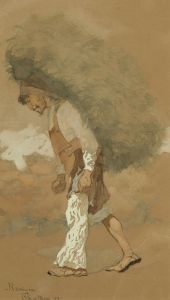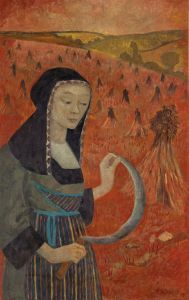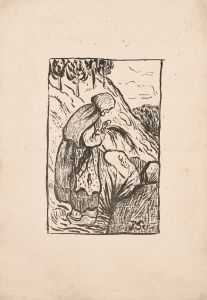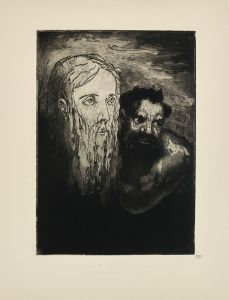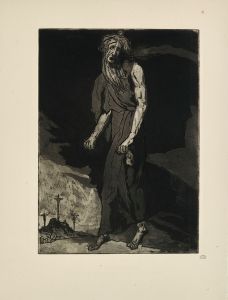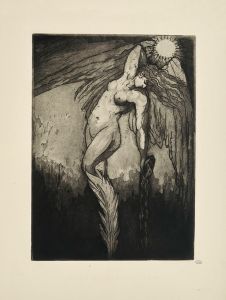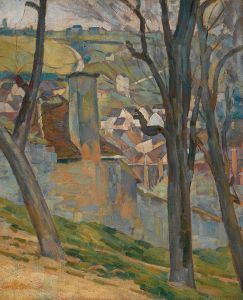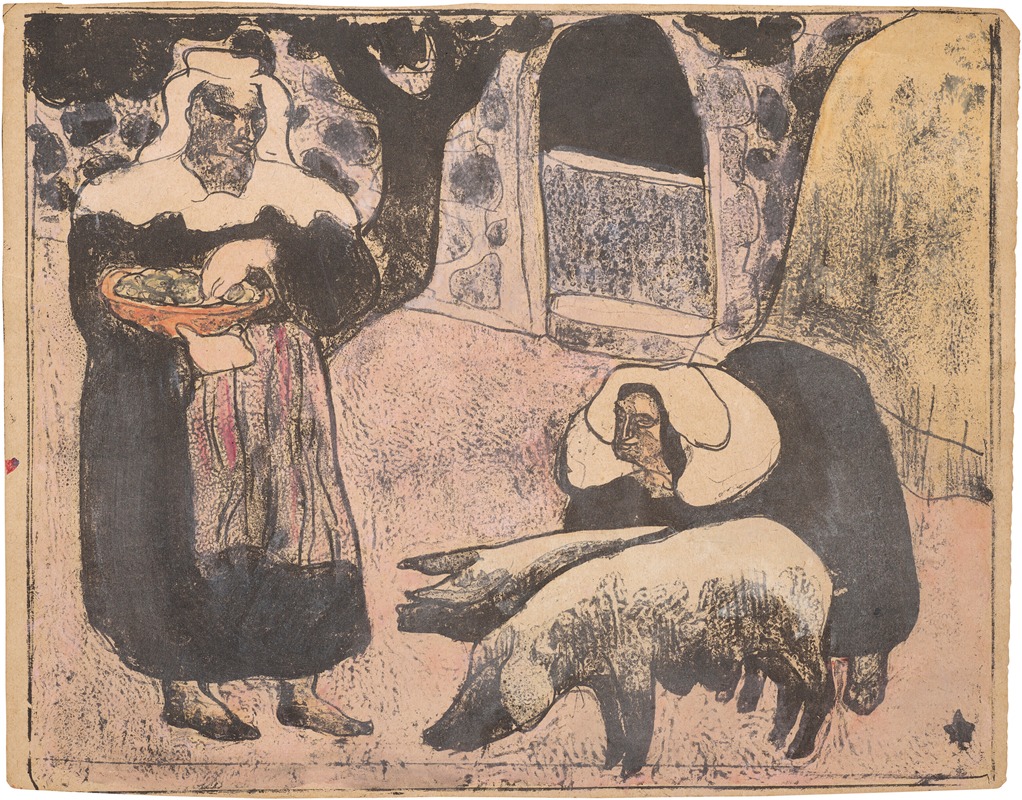
Bretonne nourissant les cochons
A hand-painted replica of Emile Bernard’s masterpiece Bretonne nourissant les cochons, meticulously crafted by professional artists to capture the true essence of the original. Each piece is created with museum-quality canvas and rare mineral pigments, carefully painted by experienced artists with delicate brushstrokes and rich, layered colors to perfectly recreate the texture of the original artwork. Unlike machine-printed reproductions, this hand-painted version brings the painting to life, infused with the artist’s emotions and skill in every stroke. Whether for personal collection or home decoration, it instantly elevates the artistic atmosphere of any space.
"Bretonne nourissant les cochons" (Breton Woman Feeding Pigs) is a painting by the French artist Émile Bernard, a prominent figure in the Post-Impressionist movement. Bernard was known for his innovative approach to painting, which included the use of bold colors and simplified forms. He played a significant role in the development of the Synthetist style, which emphasized flat areas of color and bold outlines, a departure from the more naturalistic styles that preceded it.
Émile Bernard was born in Lille, France, in 1868 and became associated with the Pont-Aven School, a group of artists who gathered in Brittany, France, during the late 19th century. This group, which included artists like Paul Gauguin, was instrumental in the transition from Impressionism to more abstract styles. Bernard's work often depicted scenes from everyday life in Brittany, capturing the region's unique cultural and rural aspects.
"Bretonne nourissant les cochons" reflects Bernard's interest in rural life and his fascination with the Breton culture. The painting portrays a Breton woman engaged in the simple, yet essential task of feeding pigs, a common scene in the agrarian society of Brittany at the time. Bernard's depiction is characterized by its use of vibrant colors and strong outlines, typical of his Synthetist style. The painting's composition focuses on the interaction between the woman and the animals, highlighting the connection between humans and nature.
The choice of subject matter in "Bretonne nourissant les cochons" is significant as it reflects Bernard's desire to capture the essence of Breton life. During his time in Brittany, Bernard was deeply influenced by the region's traditions and landscapes, which he saw as a source of artistic inspiration. This painting, like many of his works from this period, emphasizes the simplicity and authenticity of rural life, contrasting with the rapidly industrializing world of late 19th-century France.
Bernard's relationship with other artists of the Pont-Aven School, particularly Paul Gauguin, was complex and influential. While they shared ideas and techniques, Bernard and Gauguin had differing views on art and its purpose. Bernard's emphasis on capturing the spiritual and symbolic aspects of his subjects can be seen in "Bretonne nourissant les cochons," where the everyday act of feeding pigs is elevated to a subject worthy of artistic exploration.
The painting is also notable for its stylistic elements. Bernard's use of flat color planes and strong outlines creates a sense of harmony and balance, drawing the viewer's attention to the central figures without the distraction of unnecessary detail. This approach was part of Bernard's broader artistic philosophy, which sought to distill scenes to their essential elements, allowing the viewer to engage with the underlying themes and emotions.
"Bretonne nourissant les cochons" is an example of Bernard's contribution to the evolution of modern art. His work laid the groundwork for future movements, such as Fauvism and Cubism, by challenging traditional perspectives and encouraging artists to explore new ways of seeing and representing the world. Today, Bernard is recognized as a key figure in the transition from Impressionism to more abstract and symbolic forms of art, with "Bretonne nourissant les cochons" standing as a testament to his innovative spirit and deep connection to the Breton landscape and culture.





